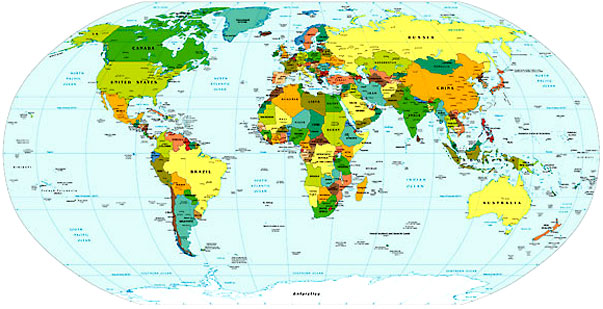 So, 30 May is Anguilla day—which means I get to keep learning about the Caribbean. Never a bad thing. Anguilla is another British overseas territory, and part of the Leeward Islands. The Leeward Islands (the northern part of the Lesser Antilles) are divided between being independent, and being territories of the United Kingdom, France, the Netherlands, and the Netherland Antilles. Anguilla consists of the main island—capital: The Valley—and a number of smaller islands and cays that have no permanent population. Including—oh! I love it!—the Prickley Pear Cays.
So, 30 May is Anguilla day—which means I get to keep learning about the Caribbean. Never a bad thing. Anguilla is another British overseas territory, and part of the Leeward Islands. The Leeward Islands (the northern part of the Lesser Antilles) are divided between being independent, and being territories of the United Kingdom, France, the Netherlands, and the Netherland Antilles. Anguilla consists of the main island—capital: The Valley—and a number of smaller islands and cays that have no permanent population. Including—oh! I love it!—the Prickley Pear Cays.The first inhabitants were Amerindians from South America—their name for the island was Malliouhana. There have been artefacts of their habitation found dating back to around 1300 BCE, with the remains of settlements from around 600 CE.
 The European discovery of the island is uncertain—it may have been sighted by Columbus in 1493, but it is also often credited to the French explorer Pierre Laudonnaire. The Dutch say they built a fort (not, I imagine, out of pillows… Okay, that was just silly) in 1631, but no remains have been found. English colonists came from Saint Kitts in 1650, and began growing tobacco and corn. Following English settlement? Well, in 1656 Carib Indians invaded, destroying settlements, and in 1666 the French captured the islands. Then the British came back in 1667 under the Treaty of Breda, which saw them regain control of the island.
The European discovery of the island is uncertain—it may have been sighted by Columbus in 1493, but it is also often credited to the French explorer Pierre Laudonnaire. The Dutch say they built a fort (not, I imagine, out of pillows… Okay, that was just silly) in 1631, but no remains have been found. English colonists came from Saint Kitts in 1650, and began growing tobacco and corn. Following English settlement? Well, in 1656 Carib Indians invaded, destroying settlements, and in 1666 the French captured the islands. Then the British came back in 1667 under the Treaty of Breda, which saw them regain control of the island.I never thought about the cutthroat hobby of colonists capturing each other’s islands in the Caribbean before. Anguilla got its own back in 1744 when it invaded the French half of St Martin and held it for four years until the 1748 Treaty of Aix-la-Chapelle. Tit for tat. The French made attempts to invade Anguilla again in 1745 and 1796, but failed both times.
Anguilla’s soil and climate made it an unsuccessful site for plantations—as such, slaves were permitted to leave and pursue their own interests. With the abolition of slavery, many of the British left the region to return to Europe, and the majority of the island’s inhabitants are of African descent.
In 1824 Anguilla was placed under the administrative control of Saint Kitts—an unpopular move among Anguillans, who perceived that the Saint Kitts administration weren’t very interested in their affairs.
Which brings us back to Anguilla Day. On 30 May 1967, the Saint Kitts police were evicted from the island. 11 July saw a referendum on Anguilla’s secession—results? 1,813 votes for secession, 5 against. This raised a question regarding the governance of the island that continued for the next few years. A second referendum was held in 1969—again, the results were emphatic. 1,739 to 4 against returning to association with Saint Kitts. A British envoy arriving in March 1969 was expelled; this was followed by a contingent of British paratroops and 40 London police officers. The bobbies invade Anguilla! This was all in the name of restoring order, and soon the troops left, and Army engineers came in to improve public works.
Following over a decade of interim agreements, formal dissociation from Saint Kitts and Nevis occurred in 1980, and Anguilla became a separate British dependency.
Today’s poem then—I found this poem by Fabian Fahie online here.
TO MY OWN PRIVATE BEACH
In cities bent and choked, I dream of clear blue skies.
In dirty smelling streets, I recall days,
The fresh salt smell, Riding the insistent breeze.
I dream of the sea, And a conch shell,
Lone upon the sand, A foot-print, sunk deep,
Sudden washed away, By a tickling wave
Who can recall, now, His own private beach
When Maracas swarms, And Ochio Rios overflows
In rivers of flesh?
Who can recall, now, Sitting at sundown
On the hump Of an overhanging ledge, ‘Waiting
The sudden tensing line, Meanwhile witnessing
The cruel sadistic smashing Of waves against the sharpened teeth
Of the resisting rocks? Who can recall His paining toe
Bruised on a crab Among the weeds?
Who can recall a foot, Inflamed for days
With the spines Of a wayward sea urchin,
Half-concealed in the sand?
—Fabian Fahie


No comments:
Post a Comment